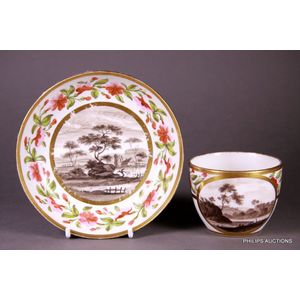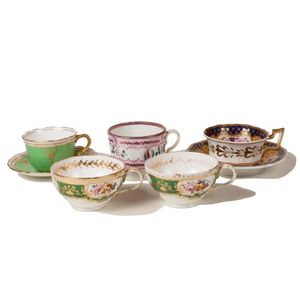Meiji Satsuma Flower Dishes
You must be a subscriber, and be logged in to view price and dealer details.
Subscribe Now to view actual auction price for this item
When you subscribe, you have the option of setting the currency in which to display prices to $Au, $US, $NZ or Stg.
- Cartouche - An ornamental panel in the form of of a shield, oval or rectangular scroll with curling edges. It may be carved into the back of a chair or the top of a sideboard, or present on a piece of silver or jewellery, and contain the initials of the original owner, heraldic symbols, or some other inscription, such as the details of a presentation.
In ceramics the term defines the central area of a vase or similar with a decorative border in one of the shapes above, into which a decorative scene or figures have been painted. - Maple - Maple, native to North America, is a dense heavy timber from light to yellow-brown in colour. It has very little distincive graining unless it is one of the variants such as birds-eye maple or burr maple, so was not used extensively for furniture in 18th and 19th century, where cabinetmakers and designers preferred timbers with more distinctive features such as mahogany, walnut, rosewood and oak.
Birds-eye maple has a seres of small spots linked by undulating lines in the grain, is highly sough and is used as a decorative veneer. Burr maple has larger and irregular grain swirls than birds-eye maple.
This item has been included into following indexes:
- Japanese ceramics, item types - other 2,592
-
Satsuma (Japan), item type
- dishes 228
- other items 2,101
Visually similar items


A Coalport cup and saucer, circa 1805-10, independently decorated, the cup and saucer with pink and green floral borders between gold bands, both decorated with circular and oval reserves with grisaille landscape scenes, height 6 cm, (cup) diameter 13.5 cm

A George V, and an Edward VIII coronation cup, an Edward VIII bowl and a Commonwealth cup and beaker and five Victorian porcelain teacups and two saucers

A 19th century English porcelain trio with hand painted grape and gilding decoration. Possibly Coalport.
